by Frank | Nov 23, 2015 | graphic design, illustration
In the spring I created a poster for a groundbreaking couple of events – the first gigs to take place in an actual art gallery in National Museum Cardiff. In October the Museum reprised the events and I updated the poster with new colours.
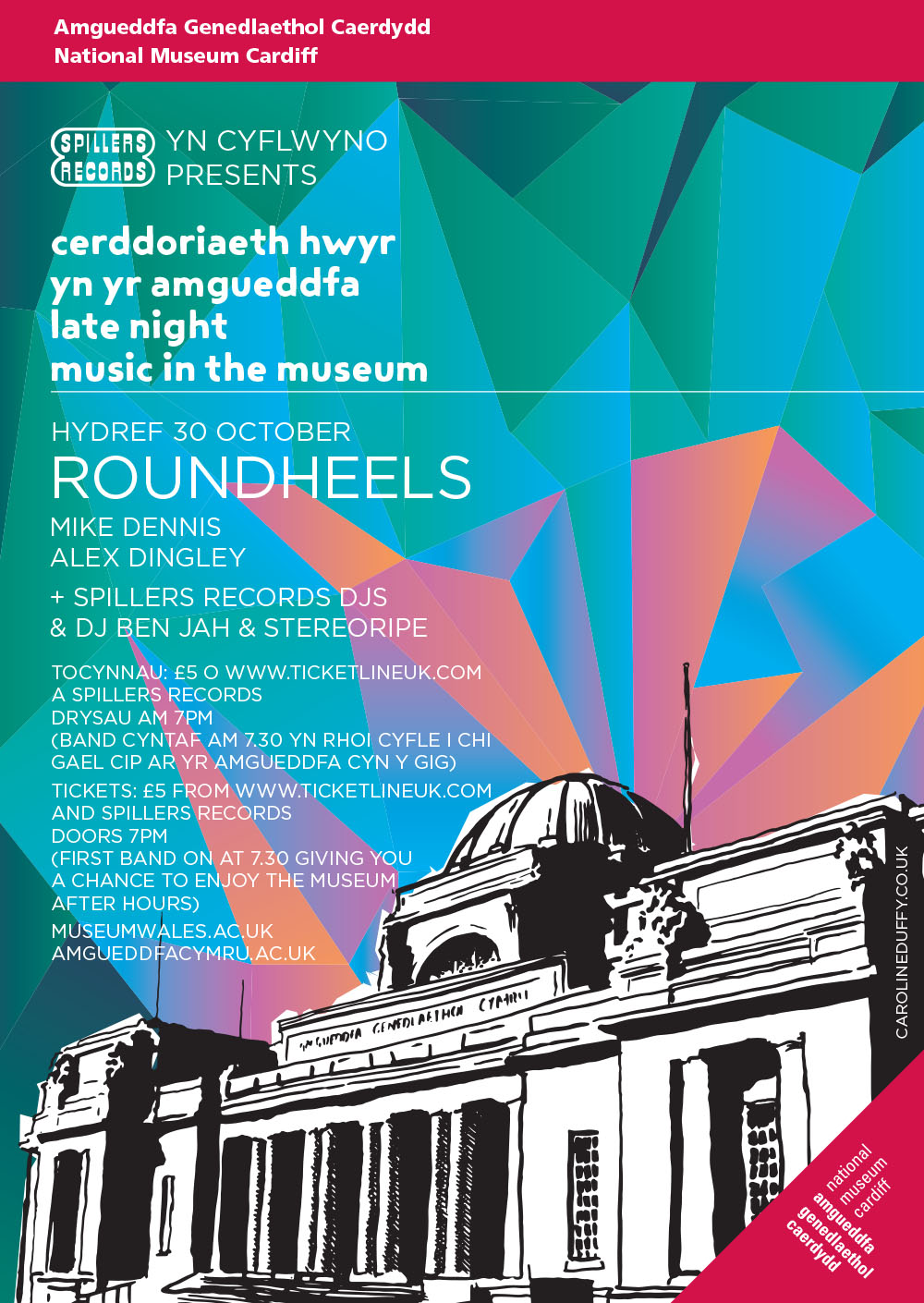
by Frank | Nov 20, 2015 | illustration
 Way back in July I had an email from someone who wanted to commission illustrations for a short story she had written inspired by the legend of the Selkie – a fairy that can transform from seal to human. I was initially circumspect – fellow illustrators are sure to nod their heads with understanding when I say that four out of five enquiries we get from members of the public (as opposed to publishers or agencies) who want illustrations for a book they have written tend to have no idea about the level of work involved and thus balk at the cost. Which tends to wear down one’s enthusiasm – getting all excited about a wonderful project and then being told that you’re basically urinating all over someone’s dream by wanting a hell of a lot more than the £30 per illustration that they thought you’d require.
Way back in July I had an email from someone who wanted to commission illustrations for a short story she had written inspired by the legend of the Selkie – a fairy that can transform from seal to human. I was initially circumspect – fellow illustrators are sure to nod their heads with understanding when I say that four out of five enquiries we get from members of the public (as opposed to publishers or agencies) who want illustrations for a book they have written tend to have no idea about the level of work involved and thus balk at the cost. Which tends to wear down one’s enthusiasm – getting all excited about a wonderful project and then being told that you’re basically urinating all over someone’s dream by wanting a hell of a lot more than the £30 per illustration that they thought you’d require.
Jane Russ was different, however. A published writer who is married to a graphic designer, she appreciated exactly how much work was involved, and considered my quote fair. She had previously worked with a couple of other illustrators on the project but it hadn’t worked out. Her husband, on seeing my quote, remarked “at last, a professional!” which I took to be a compliment indeed. She decided to get in touch with me because a) my logo is a hare, and she is chairman of the Hare Preservation Trust, and b) the cover image of my website, the surfing one, shows I know the sea and how to draw it!
The project
The story – about a Selkie who bewitches a fisherman – is a short one: sixteen paragraphs of prose and an illustration for each paragraph. It’s traditionally a children’s story – do watch the wonderful Song of the Sea film that came out last year – but this story is more for adults. The aesthetic is somewhat based on the Eragny Press – little hardback books with woodcut-style images, subtly coloured, and bordered with stylised blocks and beautiful letterpress typesetting. Jane said she wished to create a “jewel” of a book. I got very excited about this, as you can imagine!
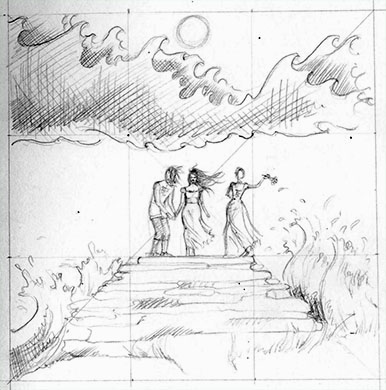
Pencil rough. You can see faint lines of the Rule of Thirds composition I’ve used for all the illustrations.
The schedule
With her previous illustrators Jane had worked a system where each illustration was developed to completion in turn, but that didn’t work for me. For the story to have a visual flow – spirit of continuity – I advised that we created the roughs all at the same time. We worked out a schedule together which balanced this need for continuity with Jane’s needs, which were that work was done – and payment made – in stages. She needed to have a small selection of these illustrations to submit the project to publishers, and also I was an unknown quantity so she wanted to make sure she liked my work and working with me before committing to paying me for the whole project. There are to be sixteen illustrations in all, so first of all we had a long chat on Skype and agreed that I was to draw roughs for the first 8 illustrations. I requested 50% payment in advance for these (it’s a really good idea to get payment upfront for new clients to make sure that someone is serious about the work and values your time and talent) and got to work.
Jane loved the first sketches. We made a few amends and then I went on to doing the rest of them. I then inked one up and then coloured and added texture in Photoshop. We then agreed that I would ink and colour two more illustrations, as well as creating edging blocks, before her husband Mick created the layout which they would then submit to various publishers.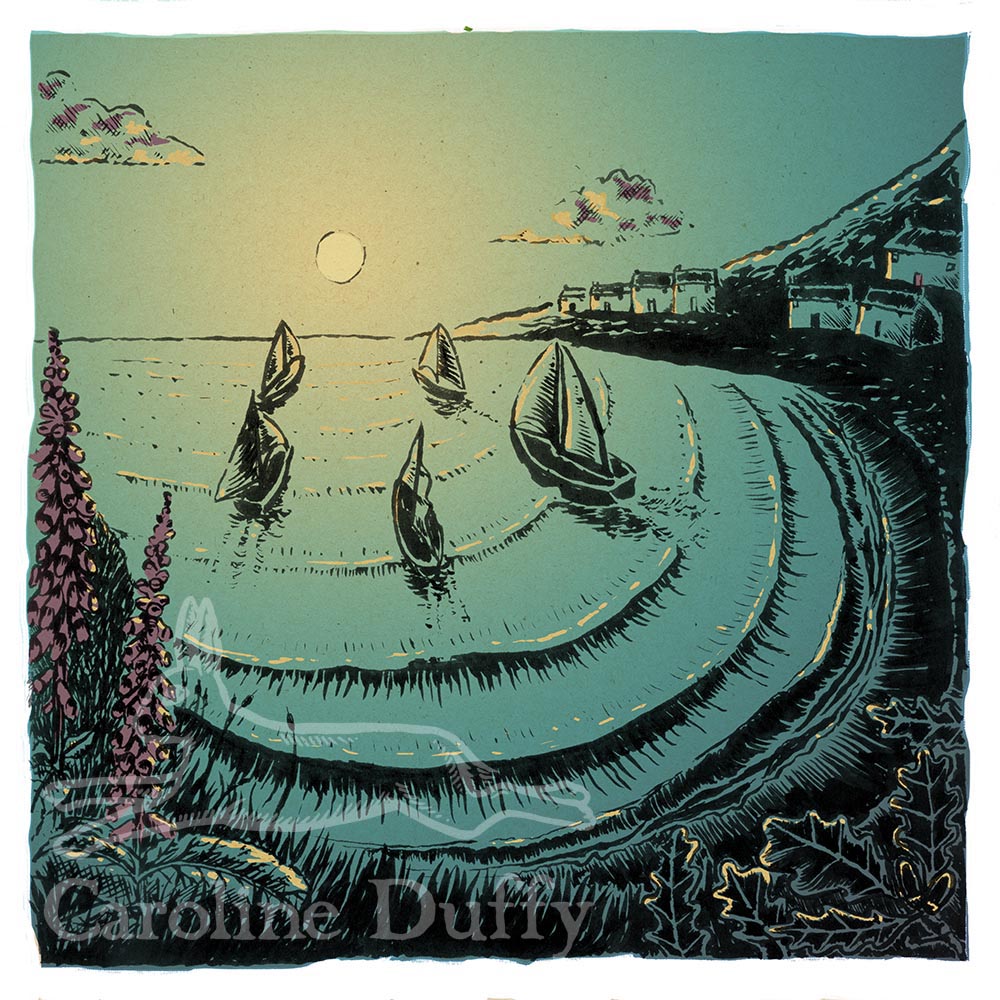
What’s happening now
The three illustrations you see are being worked with the text by Mick (example spread below) and then will be submitted to suitable publishers. I’ll let you know of any future developments!

This is just the most exciting project I’ve ever had the good fortune to work on – it’s pushing my illustration skills further and enabling me to develop my visual storytelling. I can’t wait to see a published book!
by Frank | Nov 19, 2015 | graphic design, illustration, interpretation
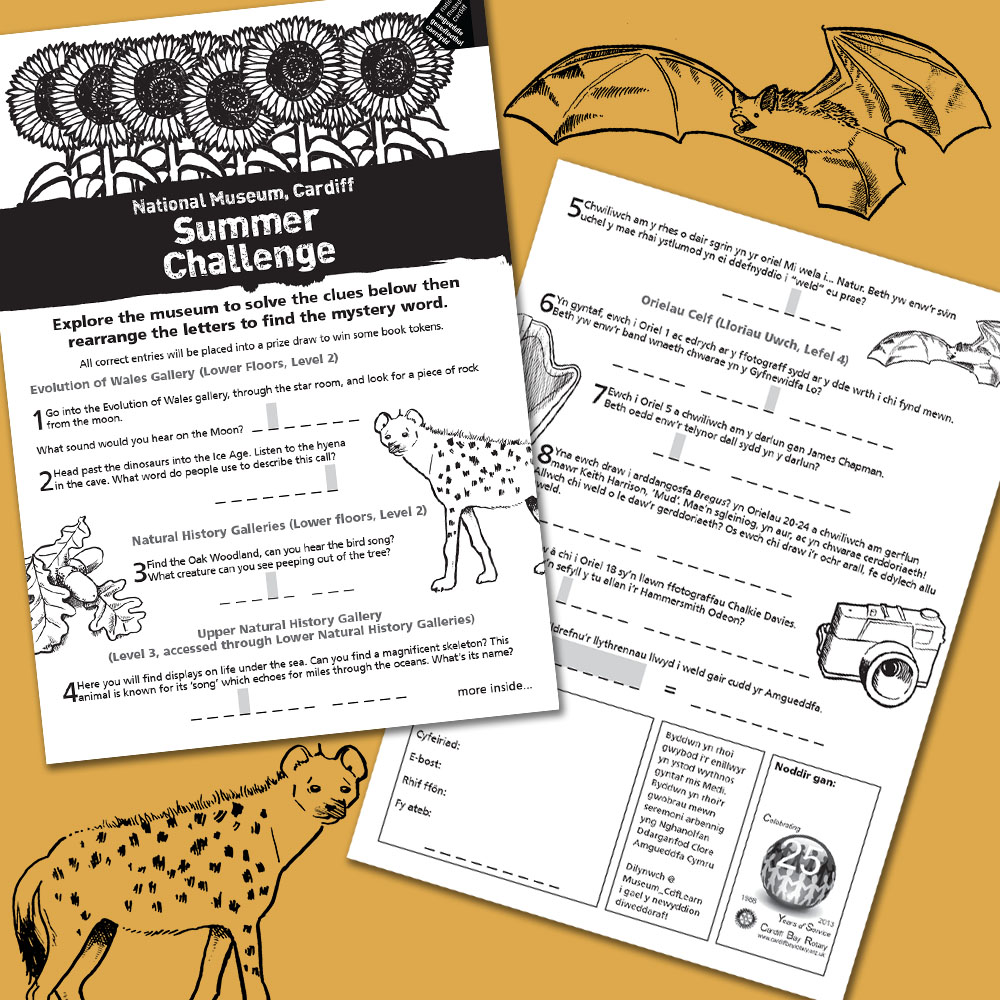 For the last few summers the Learning Department at National Museum Cardiff has run a Summer Challenge for children, the prize being some book tokens, and they’ve asked me to design and illustrate it. It’s just a simple black and white affair – 4 page A4 with Welsh one side and English the other. This year’s illustrations included a bat, a hyena and a harp!
For the last few summers the Learning Department at National Museum Cardiff has run a Summer Challenge for children, the prize being some book tokens, and they’ve asked me to design and illustrate it. It’s just a simple black and white affair – 4 page A4 with Welsh one side and English the other. This year’s illustrations included a bat, a hyena and a harp!
by Frank | Nov 18, 2015 | illustration
 Wales Millennium Centre asked me to create illustrative signage, in the form of a large mural, to celebrate the support of Dyfrig and Heather John Charitable Trust for one of the arts centre’s important spaces.
Wales Millennium Centre asked me to create illustrative signage, in the form of a large mural, to celebrate the support of Dyfrig and Heather John Charitable Trust for one of the arts centre’s important spaces.
Dyfrig John has a love for the Preseli mountains, and so the room was renamed The Preseli Room / Ystafell y Preseli, and I was commissioned to create a large artwork that reflected the feel of the mountains. A wonderful project – but I had only a week to do it!
For me, the Preselis are colourful, rainy mountains, wild and natural and scattered with stone circles and burial chambers. They are the source of the huge blue dolmens from which Stonehenge was built. I wanted to capture this colour, this wilderness. I worked with watercolour paints, blending different colours together on variously textured papers, creating interesting effects as various pigments ran and clashed and feathered together.
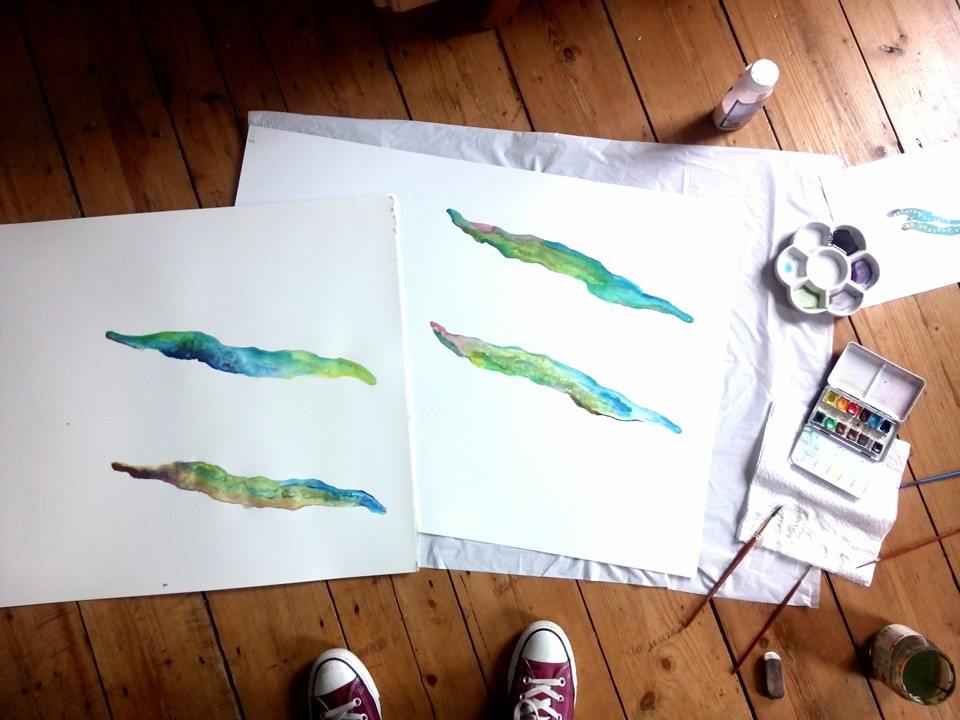
I sent over various options and using the Centre’s own font (famous for being on the frontage of the building) I played with different ways of displaying the name of the room bilingually. The Centre’s team chose their favourite and I scanned in the watercolour at 2000dpi. The artwork was printed and installed by Semaphore.
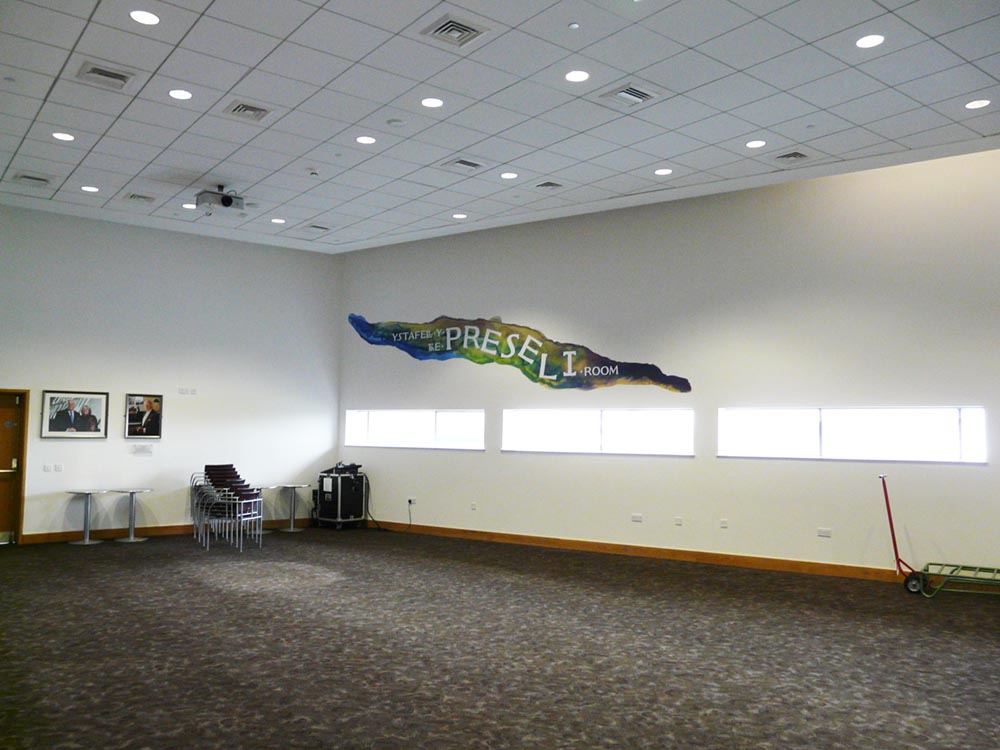
The Centre reported that Dyfrig and Heather John were thrilled with the mural and said it’s transformed the room from a bland space to something far more vibrant.
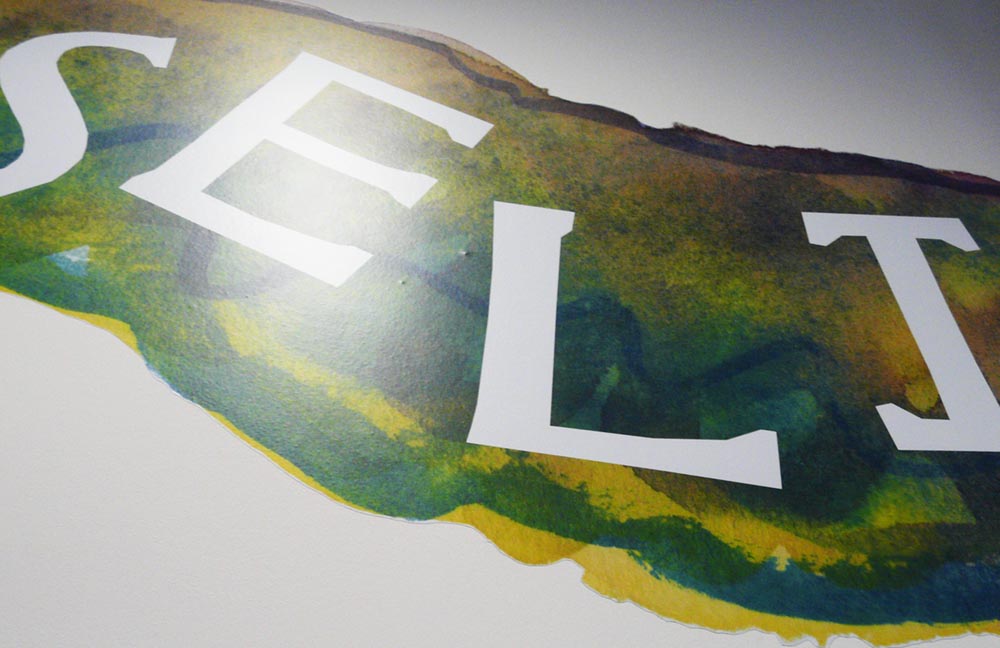
by Frank | Jul 22, 2015 | illustration
I’m delighted that the book illustration I created for writer Peter Bartram’s series of stories about crime-solving Brighton journalist Colin Crampton is finally here with me in the flesh!
Peter originally asked me to create a series of four illustrations for his stories, and this one of Colin himself is by far my favourite. I am very proud to have been involved.
You can buy Peter’s book here
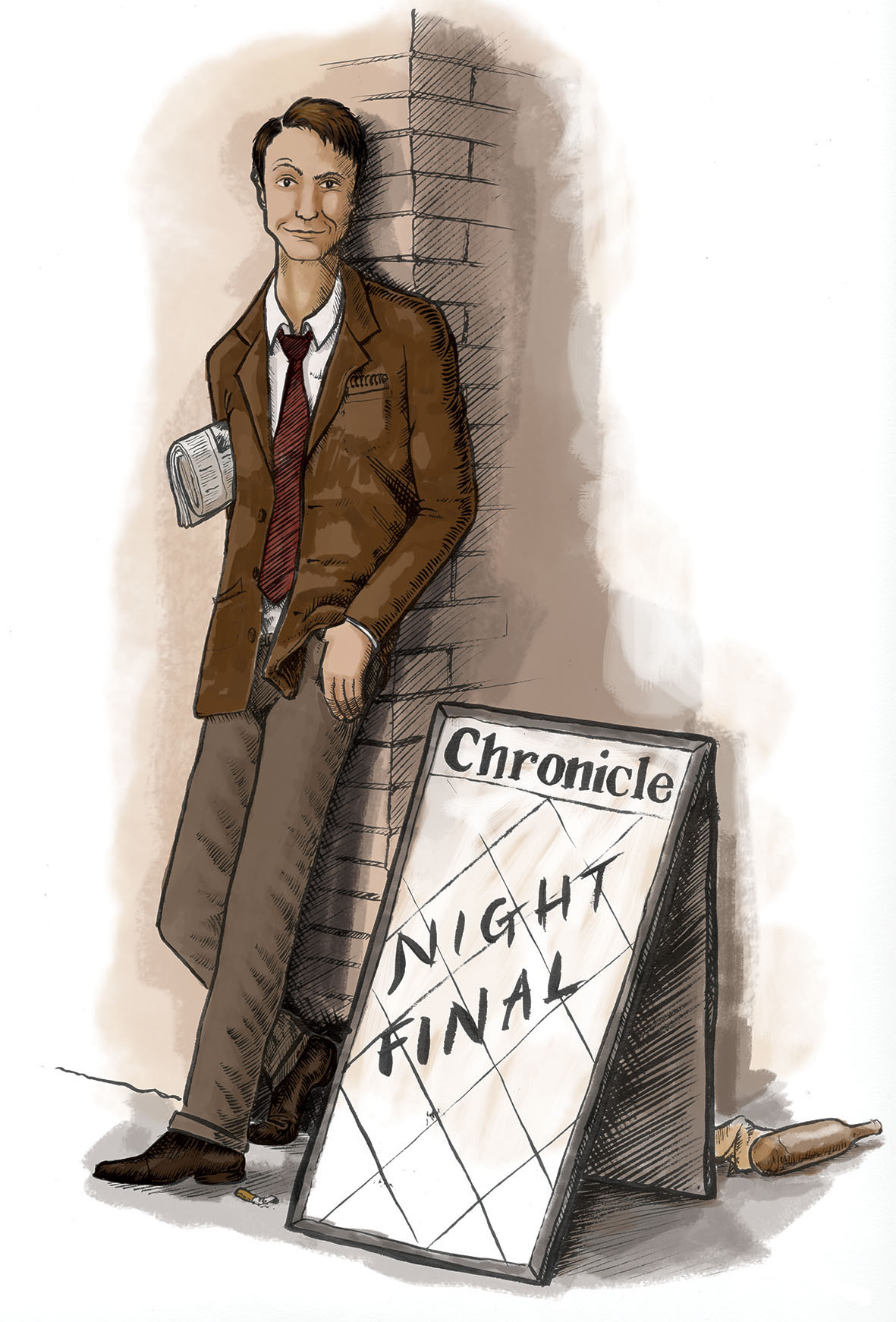
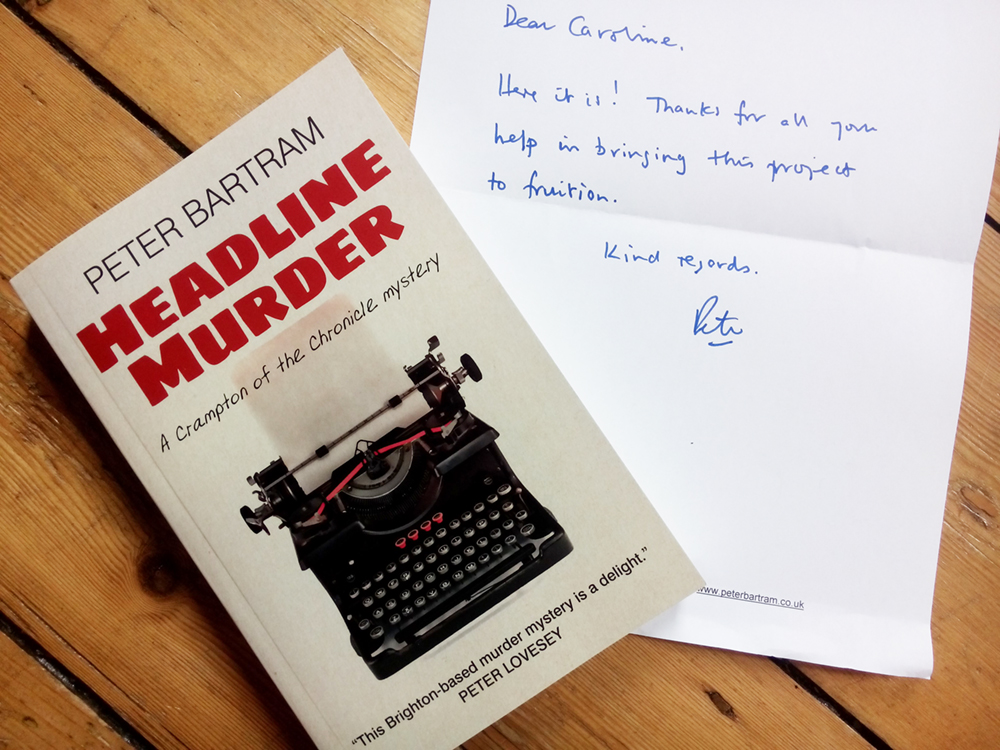
by Frank | Jul 16, 2015 | illustration
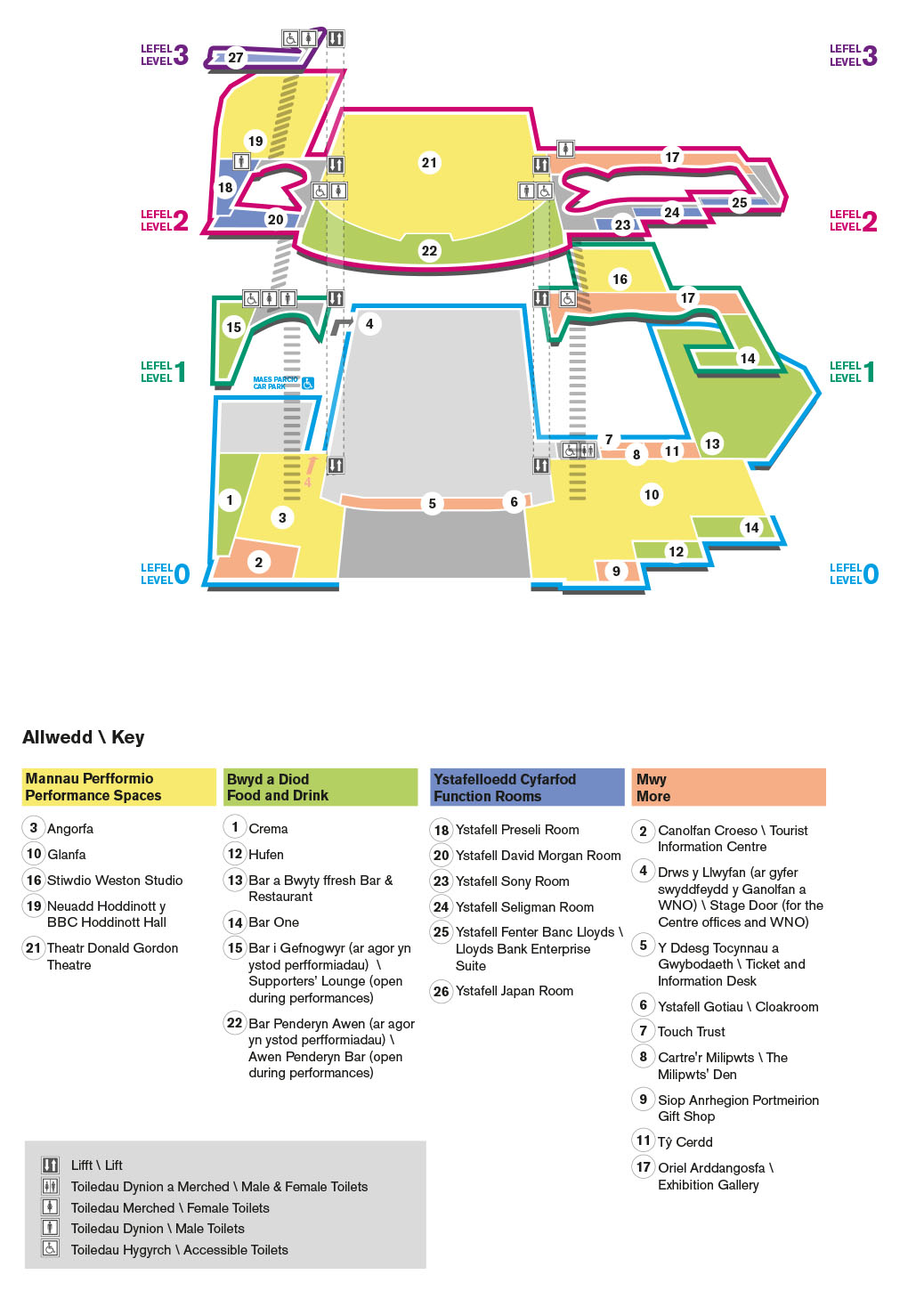 This map illustration is one of those strange jobs that I was asked to do purely out of luck and happenstance. And aren’t those the best ones?
This map illustration is one of those strange jobs that I was asked to do purely out of luck and happenstance. And aren’t those the best ones?
After creating the Women of the World art zine for Melissa Hinkin and Wales Millennium Centre, I went in to meet the lovely communications people at WMC to show them the range of work I’d done for other people and to ask if there was anything else I could help them with. I happened to mention that later that week I was off to a client meeting in North Wales and was planning to climb Snowdon while there; thus I happened to mention while chatting about said climbing of Snowdon that I’d bought two Ordnance Survey maps – one of Snowdonia and one for Anglesey, where I’d be staying, so I could have a good explore – and confessed that I have a bit of a thing about maps. I LOVE maps. I can spend hours pouring over an OS map, looking at all the Roman forts and Neolithic burial chambers and sacred wells and shake holes and such like. I consider them to be works of art in their own right: indicators of what we find worthy of recording in a landscape – a kind of social record, the beauty of which comes from their functionality. Plus some of the older maps have just the best graphic design.
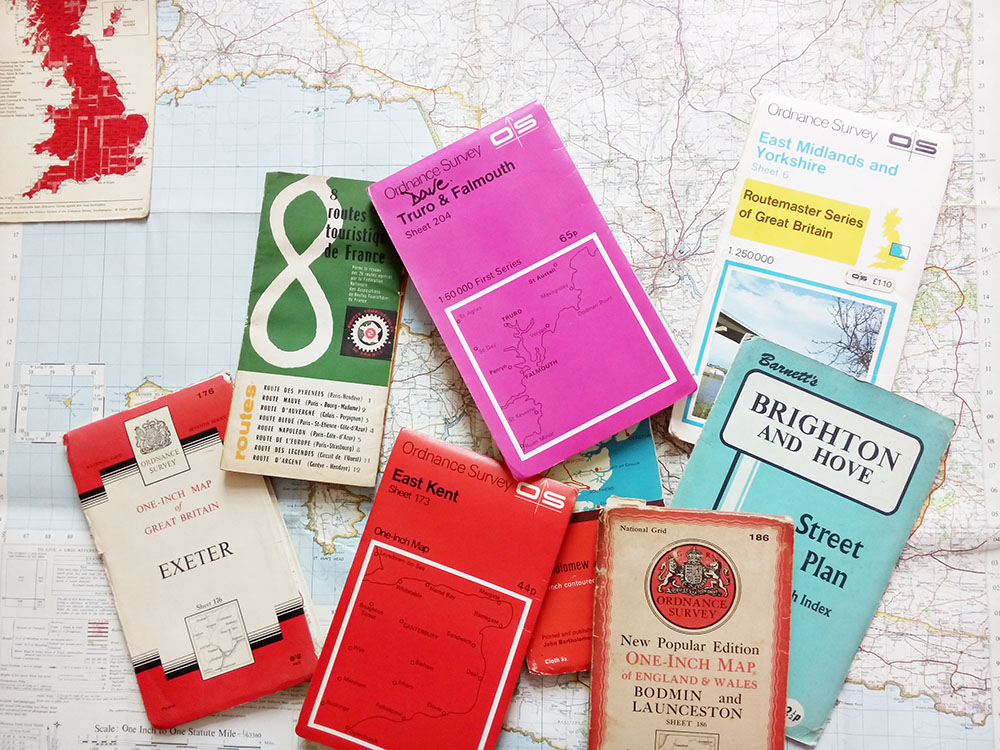
Glorious!
Anyway, enough about OS maps. On the way home from this meeting I got an email from Ceri at WMC who said that she’d bumped into a colleague and mentioned me and my (somewhat weird) obsession with maps. His immediate response was that the Centre desperately needed a new visitor map: the one they had was confusing. I had a look at it and I had to agree: as someone who is (obviously) well used to maps and who has rather good special awareness, I could make neither head nor tail of their map. Thus, I began my research.
I looked at all manner of public buildings: The Royal Opera House in Covent Garden, the Natural History Museum, the Tate Modern, the Sydney Opera House, the Albert Hall, the Southbank Centre, etc etc. I downloaded their visitor maps and studied how they’d chosen to represent themselves spatially to their visitors. I decided that I liked the Natural History Museum’s approach best: all of the floors are on one graphic, you can see the shape of the building and locations of lifts, toilets, stairs etc are very clear, without the image being overloaded with architectural irrelevances.
I showed these maps to WMC and talked through why I liked the Natural History Museum’s solution best, and how I thought it could be adapted to their building. They agreed, and so we set a date and time for me to trace the architect’s plans and to wander around the place taking photographs.

tracing of architects’ plans
I took the enormous sheets of tracing paper home and scanned them on my little A4 desk scanner, pieced the A4 scans back together in Photoshop, and traced them in Illustrator. I then had pretty accurate floor plans of the ground and first three floors of the Centre.
I then created a perspective grid in Illustrator and set about moving the building around until I got the most accessible view of it. What posed a real problem was a sort of “tail” part of the building out the back where various organisations – Urdd Gobaith Cymru, Hijinx Theatre etc – are based. Showing this tail and keeping the rest of the building easy to navigate was difficult, and on seeing my first draft Ceri decided that it wasn’t needed. (Later on she decided to include just the ground-floor plan from its original birds-eye view with the tail* to indicate to visitors where they could find these organisations in the building). So I went back to the original floorplans in Illustrator, removed the “tail” and set about redoing the perspective but this time from the front.
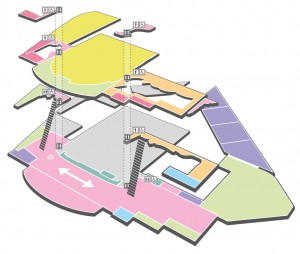
the first version of the map illustration with “tail” – the purple extension out the back
We decided on colour codes for each of the floor levels, and a separate colour code for the type of room (function room, performance space, food and drink etc). The toilets were clearly marked as were the stair and lift positions.
Lastly we added a key. We played around a bit with the various numbers and what would be easiest for people to understand and came up with numbers from starting north and moving south, ground floor to third floor, and then grouped the numbers by their colour-coded sections.
Thus we ended up with something that is as simple as it can be while still clearly showing the locations of all the various rooms and areas. Orientation is helped by the fact that the shape of the building can be discerned from the map, and by linking together the floors with the stairs and lift. You can easily find all the bars, the performance spaces, the function rooms, and it’s simple to discover what floor level you’re on.
As maps go it’s very different from what the Ordnance Survey produce, but I think it does the job pretty well!
*Of course you all already know this, dear reader, but always save altered files under a new name – when clients want to go back to versions you’ve altered (such as the previous floorplan that was drawn from above and has a tail) you can just open up the old file rather than having to redo lots of painstaking work.

















